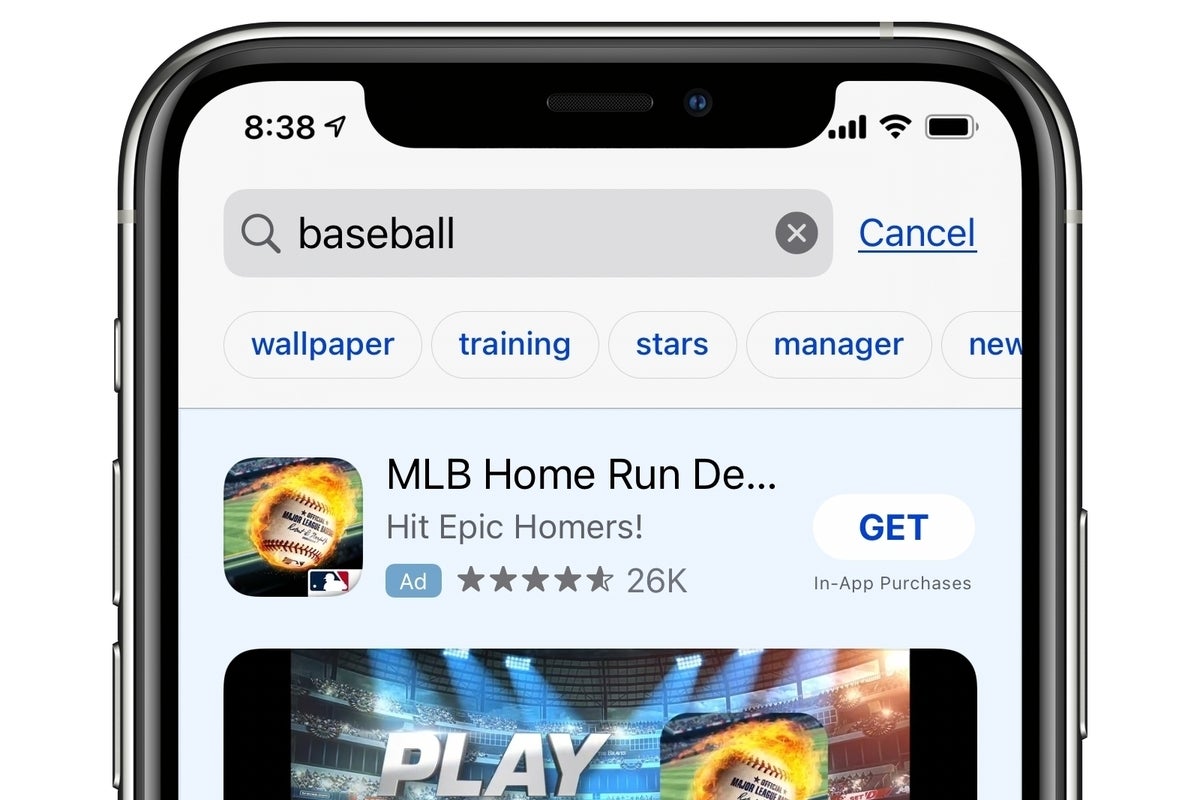Apple's latest controversy: Expanded App Store advertising

Credit to Author: Jonny Evans| Date: Mon, 01 Aug 2022 09:03:00 -0700
Depending on how you look at it, Apple may be ramping up ways developers can reach out durectly to customers via its App Store – or building its own business at others’ expense.
Apple has had an advertising business of its own ever since Apple’s then CEO, Steve Jobs, introduced us to iAds in 2010. The scale of that offer was always limited to Apple’s platform, but the service arguably failed, with its technology living on in the form of ad slots in Apple News and the App Store.
Apple’s App Store currently hosts just two ad slots, one in the search tab and the other in Search results. You can tell when you are looking at an ad from the blue shade behind the graphic and a small blue badge that says “ad” – these ads are hard to mistake for content.
Apple now intends to add more ad slots to the App Store:
Apple says search ads provide opportunities for developers of all sizes to grow their business. “Like our other advertising offerings, these new ad placements are built upon the same foundation — they will only contain content from apps’ approved App Store product pages and will adhere to the same rigorous privacy standards,” the company said in a statement to 9to5Mac.
Apple says developers will likely use these slots to reach customers searching through specific ad categories, though they will not be able to target specific competing apps.
At the same time, ads shown will be those that are seen as relevant to the app you are looking at, which implies that apps from competing developers will be seen on some app pages.
What’s interesting is how effective these ads seem to be. The company says 70% of App Store visitors use Search to find their next app; that 65% of all downloads take place after search; and that it sees a better than 50% conversion rate for search ads.
“Apple Search Ads was the most efficient, scalable paid channel for our relaunch. We captured a broader audience with higher intent while maintaining efficiency,” said Brooke Tarabochia, director of growth marketing at Peloton Digital, in a statement on the Apple website.
Apple made several short references to its digital advertising business during its last financial call.
The overall sentiment it shared seems to be that Apple’s ads business isn’t really meeting expectations, which Apple CEO Tim Cook said reflected the macroeconomic environment. Cook also pointed out: “We want to empower our users and care about their privacy. We do offer search ads.”
Apple CFO, Luca Maestri, said a little more.
“[Tim Cook] mentioned that there are some pockets of weakness, primarily in digital advertising, that we will need to work through. But at the same time, our services business a year ago grew a lot….”
Apple is facing some pushback for the decision to add a couple of additional ad placements to its service. Some argue that these ads mean Apple is placing ads above users’ own results and adding ads to a listing page once a developer attracts a user to the page.
Some developers are infuriated at the ads appearing at the bottom of their app listing. They feel that, having done the work needed to bring a potential user to their page, the existence of ads from competitors could damage conversion rates. (The Today listing comprises a curated selection of apps, which means the ads may dilute the value of those pages a little.)
The other issue involves consistency.
Despite its stance on privacy, the company’s own website explains that advertisers can target ads at specific customer segments, so long as each segment contains at least 5,000 people to prevent personal targeting.
The ad system also uses account information, App Store data, transaction data, and a variety of contextual clues, such as device type, iOS version, and more. The system can, apparently, use personal data individual developers have collected through customer relationships.
However, there are significant differences between third-party ads and Apple’s own, not least that these ads cannot be for products or services available outside the store, and that ads are very clearly marked, at least so far.
All the same, Apple’s decision to expand ad placement in the App Store makes for a very easy target for some critics, who will argue that its recent moves to prevent things like App Tracking show the company using privacy as a weapon against competitors. Apple will argue that its system is inherently private, while those used by others have already been abused to the detriment of all.
It is possible to turn off personalized ads entirely on Apple’s platforms in Account Settings on the App Store app. You need to disable Personalized Recommendations, which is the part of the app that uses your app usage, downloads, purchases “and other activity” to improve recommendations you receive in the App Store and across other Apple services.
Earlier this year, Apple explained that roughly 78% of iOS users opt out of these ads, noting that doing so had little impact on conversion rates of effectiveness.
It claims advertisers saw 62.1% conversions from customers who opt into personalized ads in comparison to 62.5% from those who opt out.
Apple offers a full certification course in how to use Apple Search Ads, which registered developers can explore here.
At a time when there’s already controversy concerning Apple’s attempts to quell competing ads services by invoking rules about privacy, I’m in little doubt developers and regulators will be paying close attention to that course.
Please follow me on Twitter, or join me in the AppleHolic’s bar & grill and Apple Discussions groups on MeWe.